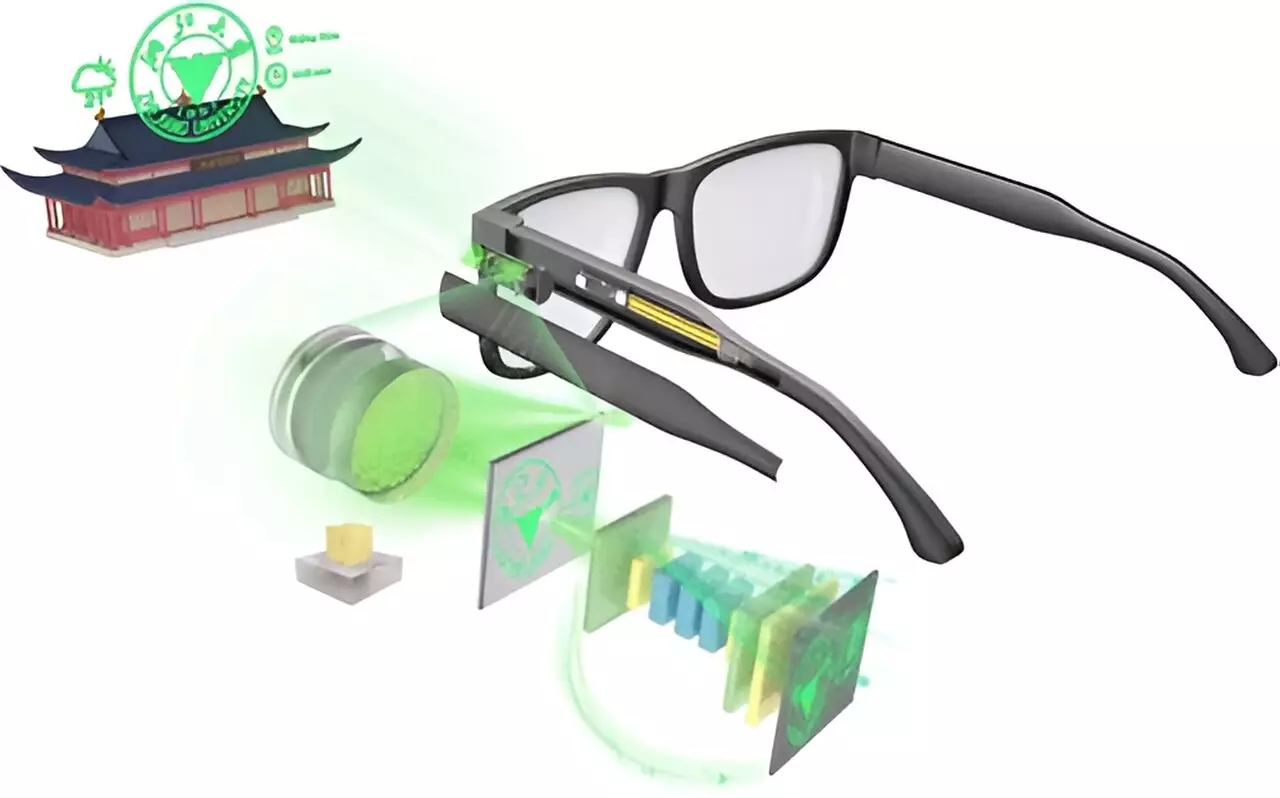Augmented reality (AR) blends virtual images with the real world, allowing users to interact with enhanced environments. While many associate AR primarily with gaming, its potential applications extend far beyond entertainment, fundamentally connecting to industries like medicine and transportation. The recent research highlighted in ACS Photonics presents a significant advancement aimed at making AR more accessible and practical through the integration of innovative optical technologies.
Traditional AR systems, notably those featured in bulky goggles or automotive displays, employ a combination of multiple lenses to project high-quality images. However, the need for portability often leads to a compromise in image resolution and viewing angles when attempting to miniaturize these systems. Researchers have faced the challenge of reducing the complexity of a four-lens AR system into a form factor similar to that of eyeglasses, while maintaining optimal performance. Many prototypes have struggled with maintaining image quality when shrinking technology, often leading to distortion or a narrow field of view.
Youguang Ma and colleagues have taken a bold step in consolidating AR’s complex optical requirements into a single-lens hybrid display mechanism, creating a prototype that significantly improves the user experience. By merging a metasurface—a wafer-thin silicon nitride layer etched with precise patterns—and a conventional refractive lens, alongside a microLED display, they’ve formed a compact solution that does not compromise on quality. This pioneering design allows for the manipulation and focus of light beams in ways that were previously unimaginable.
Notably, image quality is paramount in any AR system, and the researchers have employed a computer algorithm designed to identify and correct even minute flaws in the optical output. This significantly enhances the projected images, resulting in less than a 2% distortion over an impressive 30-degree field of view. Such results rival those seen in established commercial systems that utilize more complex multichannel optics. The real-time corrections enabled by this technology promise to deliver extraordinarily clear visual experiences.
Testing with the hybrid AR eyeglass prototype has produced compelling results. For instance, when projected images of a red panda were analyzed, the algorithm revealed structural similarities to the original that improved by 4% thanks to the correction process. This increased fidelity not only enhances the viewer’s experience but also signifies great potential for future developments in AR technology. If further improvements can transition the display system from green light to a full-color spectrum, the implications for everyday applications could be transformative.
As the researchers continue to refine their technology, the vision of mainstream AR glasses that blend seamlessly into daily life becomes more tangible. The ability to superimpose digital information onto the physical environment with high resolution and minimal distortion paves the way for advancements in navigation, education, and entertainment, among other fields. This breakthrough signifies not just an evolution in AR displays, but heralds a new chapter in how we interact with the world around us. Ultimately, with persistence and further innovation, the future of augmented reality could soon materialize into a reality that enhances our daily experiences.


Leave a Reply